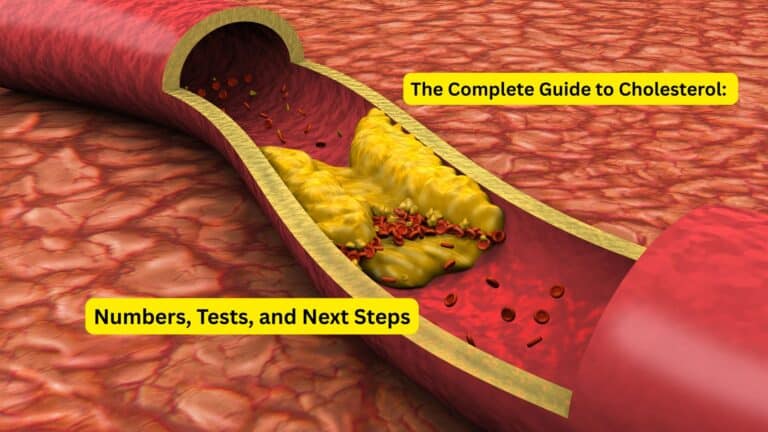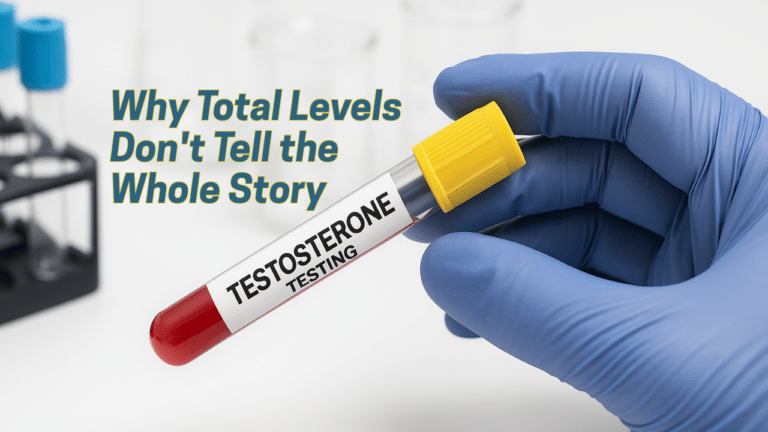Introduction
When your body perceives danger—whether it’s a car swerving into your lane or a looming work deadline—a complex cascade of hormonal responses springs into action. These stress hormones, primarily cortisol and adrenaline, serve as your body’s built-in alarm system, preparing you to either face the threat head-on or escape to safety. This ancient “fight-or-flight” response has helped humans survive for millennia, but in our modern world of chronic stressors, understanding how these powerful chemicals affect your health has never been more crucial.
The Body’s Stress Response System
Your body operates two distinct but interconnected systems to handle stress, each designed to protect you in different ways. These systems work together seamlessly, though their timelines and effects vary significantly depending on whether you’re facing immediate danger or prolonged pressure.
Adrenaline and the SAM System
The sympathetic adrenal medullary (SAM) system represents your body’s first line of defense against immediate threats. Within seconds of perceiving danger, this system releases adrenaline (epinephrine) and noradrenaline directly into your bloodstream. The initial stress response governed by the SAM system triggers immediate physiological changes, including elevated heart rate, increased blood pressure, and heightened alertness that sharpen your focus and prepare your muscles for action.
This rapid-fire response occurs almost instantaneously—your heart begins racing, your breathing quickens, and your senses become remarkably acute. Blood flow redirects away from non-essential functions like digestion toward your major muscle groups, giving you the energy and strength needed to respond to the perceived threat.
Cortisol and the HPA Axis
While adrenaline handles immediate crises, cortisol manages your body’s longer-term stress response through the hypothalamic-pituitary-adrenal (HPA) axis. This more complex system begins when your brain’s hypothalamus releases corticotropin-releasing hormone (CRH), which signals your pituitary gland to produce adrenocorticotropic hormone (ACTH). The HPA axis then stimulates cortisol release from the adrenal cortex, providing sustained energy and resources to help your body cope with prolonged stress.
Unlike adrenaline’s quick burst, cortisol’s effects unfold over minutes to hours, helping maintain your body’s equilibrium during extended periods of stress. This hormone ensures you have adequate glucose in your bloodstream, modulates your immune response, and keeps essential bodily functions running smoothly when facing ongoing challenges.
Cortisol: The Long-Term Stress Hormone
Often called the “stress hormone,” cortisol serves multiple vital functions beyond stress response. Under normal circumstances, cortisol regulates blood sugar, metabolism, and immunity while following a natural daily rhythm that supports your body’s needs throughout the day.
Cortisol levels peak around 8 a.m. naturally, helping you wake up and feel alert for the day ahead, then gradually decline throughout the evening to prepare your body for rest. This circadian rhythm ensures you have energy when you need it most while allowing your body to recover during sleep.
However, chronic stress disrupts this delicate balance. When cortisol remains elevated for extended periods, it can lead to serious health complications. Prolonged high cortisol levels contribute to inflammation, suppressed immunity, hypertension, and increased diabetes risk, turning your body’s protective mechanism into a source of long-term health problems.
The hormone accomplishes this by increasing glucose production in your liver, breaking down proteins for energy, and redistributing fat storage—particularly around your midsection. While these changes help during short-term stress, they become problematic when sustained over months or years.
Adrenaline: The Instant Stress Hormone
Adrenaline, or epinephrine, acts as your body’s emergency response system, creating dramatic physiological changes within seconds. This hormone produces immediate effects including increased energy, airway dilation, and enhanced blood flow to muscles, essentially supercharging your body’s capacity to respond to threats.
When adrenaline floods your system, your pupils dilate to improve vision, your heart pounds to circulate blood more efficiently, and your muscles receive extra oxygen and nutrients. Your liver releases stored glucose for immediate energy, while non-essential functions like digestion temporarily shut down to conserve resources for the emergency at hand.
These short bursts of adrenaline are not only harmless but beneficial—they’ve helped humans survive dangerous situations throughout history. However, repeated adrenaline surges from chronic stress place significant strain on your cardiovascular system, potentially contributing to heart problems, high blood pressure, and anxiety disorders over time.
Chronic Stress and Health Risks
When your stress response system remains activated for weeks, months, or years, the protective mechanisms that once ensured survival become sources of disease and dysfunction. The cumulative effects of chronic stress hormone elevation create a cascade of health problems that affect virtually every system in your body.
Prolonged high stress hormone levels increase the risk of metabolic syndrome, obesity, cardiovascular disease, and memory or cognitive decline. Your immune system becomes suppressed, making you more susceptible to infections and slower to heal from injuries. Sleep patterns become disrupted, creating a vicious cycle where poor rest further elevates stress hormones.
The brain itself bears much of the burden from chronic stress. Complex brain regions including the amygdala, hypothalamus, hippocampus, and prefrontal cortex regulate hormone responses through intricate feedback mechanisms, but prolonged stress can impair these regulatory systems. The hippocampus, crucial for memory formation, actually shrinks under chronic cortisol exposure, while the prefrontal cortex responsible for decision-making and emotional regulation becomes less effective.
This neurological impact helps explain why chronic stress often leads to depression, anxiety, difficulty concentrating, and poor judgment. The very systems designed to help you cope with challenges become overwhelmed, creating a state where even minor stressors feel insurmountable.
Managing Stress Hormones Naturally
Fortunately, numerous evidence-based strategies can help restore healthy stress hormone balance and protect your long-term health. The key lies in addressing both the sources of stress in your life and your body’s response to unavoidable stressors.
Lifestyle modifications form the foundation of effective stress hormone management. Regular physical exercise helps metabolize excess cortisol and adrenaline while promoting the release of mood-enhancing endorphins. Mindfulness practices, including meditation and deep breathing exercises, activate your body’s relaxation response, counteracting the stress response and promoting hormonal balance.
Sleep hygiene plays a crucial role in cortisol regulation. Maintaining consistent bedtimes, creating a peaceful sleep environment, and avoiding stimulants before bed help restore natural cortisol rhythms. Quality sleep allows cortisol levels to drop naturally overnight, preparing your body for the next day’s challenges.
Medical evaluation can provide valuable insights into your stress hormone status. Cortisol and adrenal function tests help identify abnormal patterns, suspected adrenal fatigue, or the impact of chronic stress on your hormonal health. Walk-In Lab offers convenient testing options that can reveal whether your stress levels are affecting your hormonal balance, enabling targeted interventions before serious health problems develop.
Nutritional support also plays a role in stress hormone management. Foods rich in omega-3 fatty acids, magnesium, and B vitamins support healthy stress responses, while limiting caffeine and refined sugars helps prevent additional stress on your system.
Statistics Snapshot
Understanding the scope and impact of stress hormones provides important context for their role in public health:
- Natural cortisol rhythm: Cortisol peaks around 8 a.m. naturally, providing energy for daily activities
- Acute stress response: Cortisol can rise 2-3 times normal levels within minutes during acute stress
- Stress prevalence: Approximately 75% of U.S. adults report experiencing moderate to high stress levels
- Health consequences: Long-term elevated cortisol significantly increases the risk of diabetes and hypertension
These statistics highlight the widespread nature of stress-related health issues and underscore the importance of understanding and managing your body’s stress response systems.
FAQ Section
What triggers cortisol and adrenaline release?
Stressful or threatening stimuli activate both the sympathetic nervous system and HPA axis, leading to the coordinated release of adrenaline and cortisol. This can include physical dangers, emotional stressors, work pressure, relationship conflicts, or even positive events like getting married or starting a new job.
What does adrenaline do during stress?
Adrenaline raises heart rate, blood pressure, and breathing while sharpening alertness and increasing available energy. It redirects blood flow to major muscle groups and releases glucose from energy stores, preparing your body for immediate physical action.
What are cortisol’s key functions?
Cortisol regulates metabolism, blood sugar levels, and inflammatory responses while maintaining energy during prolonged stress. It also influences immune function, sleep-wake cycles, and blood pressure regulation as part of your body’s comprehensive stress management system.
Is chronic stress dangerous?
Yes, chronic stress poses significant health risks. Extended periods of elevated stress hormones increase inflammation, suppress immune function, and raise the risk of chronic diseases including cardiovascular disease, diabetes, depression, and cognitive decline.
How can I manage stress hormones?
Effective stress hormone management includes regular exercise, mindfulness practices, adequate sleep, and stress reduction techniques. Additionally, hormone testing can help identify imbalances, while professional support may be beneficial for developing personalized stress management strategies.
Conclusion
Cortisol and adrenaline represent remarkable evolutionary adaptations that have helped humans survive countless challenges throughout history. However, in our modern world of constant connectivity and persistent stressors, these life-saving hormones can become sources of chronic health problems when they remain elevated for extended periods.
The key to harnessing the protective power of stress hormones while avoiding their harmful effects lies in understanding how they work and implementing strategies to maintain healthy balance. Through lifestyle modifications, stress management techniques, and appropriate medical monitoring, you can support your body’s natural stress response systems while protecting your long-term health and wellbeing. Walk-In Lab’s convenient testing options provide valuable insights into your hormonal status, empowering you to take proactive steps toward optimal health and stress resilience.
This content is for informational purposes only and not a substitute for professional medical advice. Always consult with your healthcare provider before making changes to your health management plan.






